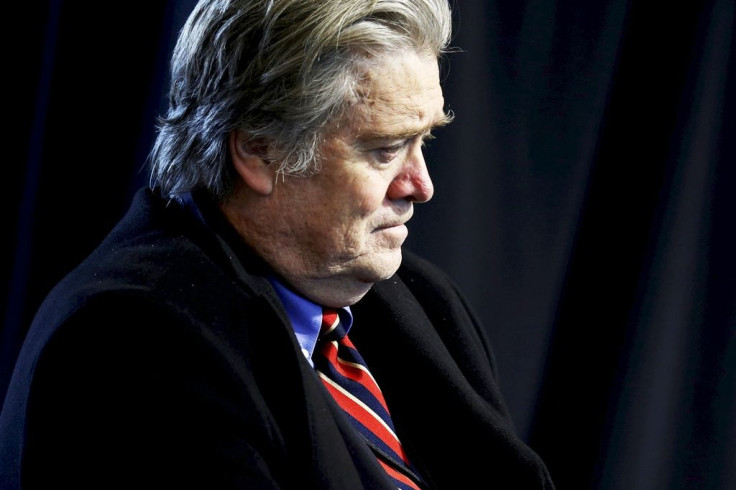Steve Bannon Wanted To Resign As White House Chief Strategist Over National Security Council Change: Report

President Donald Trump removed White House Chief Strategist Steve Bannon from his role on the National Security Council (NSC) on Wednesday. However, Bannon was not convinced with the plan and had threatened to resign if the change was made, the New York Times reported.
The former chairman of conservative news outlet Breitbart “resisted the move” over changes in his position on the NSC and warned the Trump team he would resign from his current job, an anonymous White House official told the Times. Bannon’s team, however, told the daily he never made such a threat and the change did not indicate any “diminution of his outsize influence.”
Lt. Gen. H. R. McMaster was behind Bannon’s removal from the NSC, the Times reported. McMaster reportedly insisted ousting Bannon from the White House Situation Room where the latest information on a military or political situation is discussed.
However, CNN’s senior White House correspondent tweeted late Wednesday saying Bannon was, in fact, in the Situation Room despite being removed from the NSC.
But new power center emerging, I'm told, in form of Gary Cohn and Dina Powell.. who are seen as close to Kushner. https://t.co/3sNLW1IzfT
— Jim Acosta (@Acosta) April 6, 2017
Unclear how Bannon will get along with Cohn/Powell over long haul. Cohn given nickname of "Globalist Gary" by detractors. https://t.co/CLffrLpb80
— Jim Acosta (@Acosta) April 6, 2017
In January, Trump put Bannon on the NSC principals committee triggering criticism that the president was attempting to politicize the council. In this process, the roles of the chairman of the Joint Chiefs of Staff and director of national intelligence were reportedly downgraded.
Bannon’s camp told the Times that he was given a role on the principals committee to keep a watch on Trump’s first National Security Adviser Michael T. Flynn. The retired Army lieutenant general was forced to resign in February after information surfaced he misled Vice President Mike Pence and other White House officials about the nature of the content he discussed with Russian ambassador to the U.S., Sergey Kislyak.
According to the Times, Trump was also bothered with the recognition Bannon received for his work on the Trump administration’s agenda and was not pleased with the media calling his top adviser “President Bannon.”
© Copyright IBTimes 2025. All rights reserved.






















